Donate now to support the LLIFLE projects.
Your support is critical to our success.
Your support is critical to our success.
Ferocactus cylindraceus subs. eastwoodiae
Cactaceae Syst. Init. 14: 16. 2002 [Oct 2002]
Family: CACTACEAE
Cactaceae Syst. Init. 14: 16. 2002 [Oct 2002]
Family: CACTACEAE
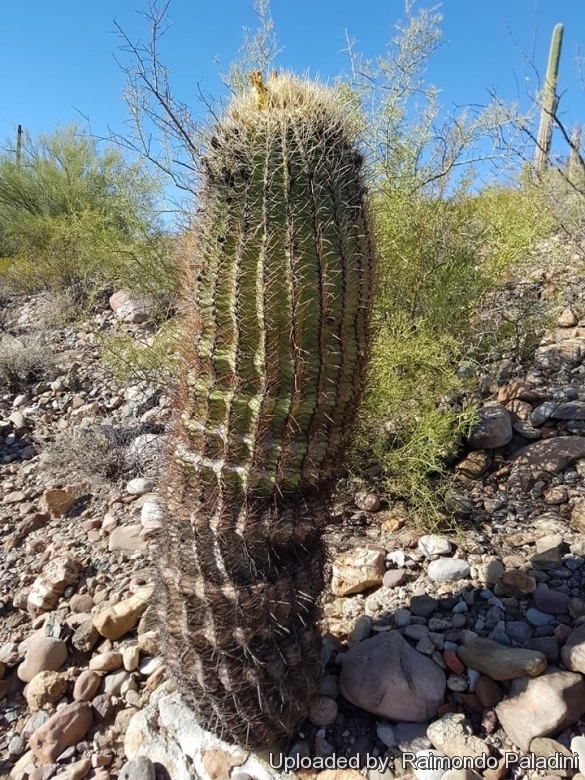
Ferocactus cylindraceus subs. eastwoodiae Photo by: Raimondo Paladini
Growing habit (Arizona)
Growing habit (Arizona)
Synonyms:
- Ferocactus cylindraceus subs. eastwoodiae (L.D.Benson) N.P.Taylor
- Ferocactus acanthodes var. eastwoodiae L.D.Benson in L.D.Benson
- Ferocactus cylindraceus var. eastwoodiae (L.D.Benson) N.P.Taylor
- Ferocactus eastwoodiae (L.D.Benson) L.D.Benson
See all synonyms of Ferocactus cylindraceus
back
Accepted name in llifle Database:Ferocactus cylindraceus subs. eastwoodiae (L.D.Benson) N.P.Taylor
Cactaceae Syst. Init. 14: 16. 2002 [Oct 2002]
Synonymy: 4
- Ferocactus cylindraceus subs. eastwoodiae (L.D.Benson) N.P.Taylor
- Ferocactus acanthodes var. eastwoodiae L.D.Benson in L.D.Benson
- Ferocactus cylindraceus var. eastwoodiae (L.D.Benson) N.P.Taylor
- Ferocactus eastwoodiae (L.D.Benson) L.D.Benson
Ferocactus cylindraceus (Engelm.) Orcutt
Cactography 1926(1): 5.
Synonymy: 16
- Ferocactus cylindraceus (Engelm.) Orcutt
- Echinocactus cylindraceus (Engelm.) Engelm.
- Echinocactus viridescens var. cylindraceus Engelm.
- Ferocactus acanthodes (Lem.) Britton & Rose
- Ferocactus acanthodes f. albispinus hort.
- Ferocactus acanthodes var. rostii (Britton & Rose) W.T.Marshall
- Echinocactus acanthodes var. rostii (Britton & Rose) Munz
- Echinocactus rostii (Britton & Rose) A.Berger
- Ferocactus rostii Britton & Rose
- Ferocactus acanthodes f. variegatus hort.
- Ferocactus cylindraceus var. hertrichii (Weinberg) hort.
- Echinocactus hertrichii Weinberg & Werderm. in Backeb.
- Ferocactus acanthodes var. hertrichii (Weinberg) hort.
- Ferocactus hertrichii (Weinberg) Kreuz.
- Thelocactus hertrichii (Weinberg) Borg
Ferocactus cylindraceus subs. lecontei (Engelm.) N.P.Taylor
Cactaceae Consensus Init. 6: 16. 1998
Synonymy: 7
- Ferocactus cylindraceus subs. lecontei (Engelm.) N.P.Taylor
- Echinocactus lecontei Engelm.
- Echinocactus wislizeni var. lecontei (Engelm.) Engelm.
- Echinocactus wislizeni f. lecontei (Engelm.) Schelle
- Ferocactus acanthodes var. lecontei (Engelm.) G.E.Linds.
- Ferocactus cylindraceus var. lecontei (Engelm.) Bravo
- Ferocactus lecontei (Engelm.) Britton & Rose
Ferocactus cylindraceus var. tortulispinus (H.E.Gates) Bravo
Cact. Suc. Mex. 25: 65. 1980
Synonymy: 5
- Ferocactus cylindraceus var. tortulispinus (H.E.Gates) Bravo
- Ferocactus acanthodes subs. tortulispinus (H.E.Gates) F.Wolf & R.Wolf
- Ferocactus acanthodes var. tortulispinus (H.E.Gates) G.E.Linds.
- Ferocactus cylindraceus subs. tortulispinus (H.E.Gates) N.P.Taylor
- Ferocactus tortulispinus H.E.Gates
back
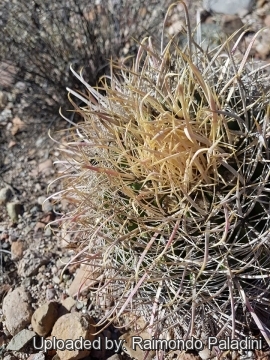
Ferocactus eastwoodiae, in habitat, Arizona. Photo by: Raimondo Paladini
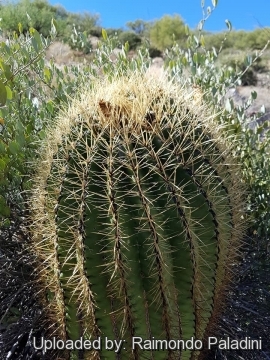
Ferocactus eastwoodiae, in habitat, Arizona. Photo by: Raimondo Paladini
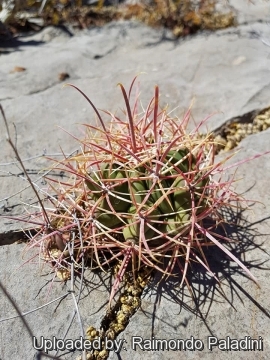
Ferocactus eastwoodiae, a juvenile specimen, Arizona. Photo by: Raimondo Paladini
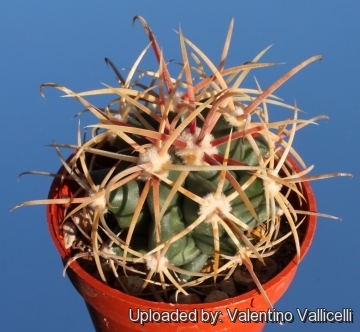
A juvenile specimen (pot diameter 5 cm). Photo by: Valentino Vallicelli
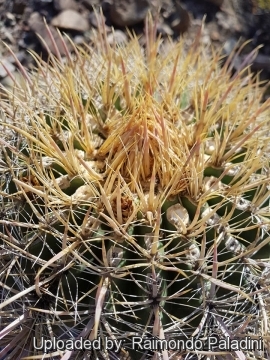
Ferocactus eastwoodiae, spination, Arizona. Photo by: Raimondo Paladini
Send a photo of this plant.
The gallery now contains thousands of pictures, however it is possible to do even more. We are, of course, seeking photos of species not yet shown in the gallery but not only that, we are also looking for better pictures than those already present. Read More...
The gallery now contains thousands of pictures, however it is possible to do even more. We are, of course, seeking photos of species not yet shown in the gallery but not only that, we are also looking for better pictures than those already present. Read More...
| Your Actions | |
|---|---|
| Back to Ferocactus index | |
| Back to Cactaceae index | |
 |
Back to Cacti Encyclopedia index |








